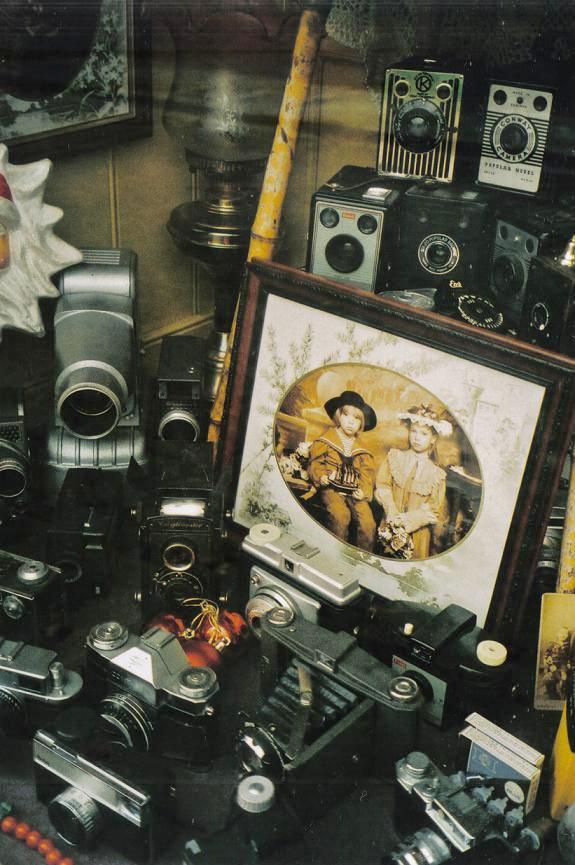
Photography: Cameras

Figure 1.--Here we see a small sampling of the campera that evolved from the Kodak Brownie in the 20th century.
It is a display in the Welsh Museum of Buildings (2011). Taking the camera out of the studio had enormous social, economic, and political consequencds that were not forssee by either George Eastman or the people who brought the first Brownies. Source: William Fergusson Collection.
|
|
The Kodak Brownie was the first mass-produced camera (1900). It finally suceeded in taking photography out of the studio and putting it in the hands of the general public, not only because it was simple to operate, easily carried, and relatively inexpensive. The Kodak Brownie the many sucessors which folloed in great profussion all relied on a basic technical innovation--modern film, especially roll film. This was first produced by George Eastman (1885) who subsequently followed with the Brownie. [A side issue is why did so many technical advances come from America and still do. Very few teachers pose this question and very few American students can answer this question.] The Brownie meant that people could create memories of not only static images, but of their many varied activities, noy only vacations and special occassiond, but every day life. And the low cost meant that these images could be taken in incredible numbers, The Brownie was so popular that Kodak was still making updated vesions into the 1960s. The large size of early film ment that cameras could not get to much smaller thn the original Brownie. Oskar Barnack addressed this problem working with the idea of using the smaller 35 mm film used by the film industry. He began this effort (1914), but the onset of the War created problems in developing this technology. European companies, especially the German companies like Leica, Zeiss-Ikon, and others picked up on this technology. Kodak introduced the Retina (1930s). Comanies intriduced range finder models and then single lens reflexes for 35 mm film. Better lens and film meant that sharp images could be obtained even with smaller film. The Germans were especially noted for their lens. Enthusiasts wanting larger film often used twin-lens reflex models. After World War II, a new type of camera appeared, the instant camera. This was introduced by Polaroid. As the reaults go better and better, it became very popular, although the results were never a good as regular film and there was no negative. The Japanese after the War enteed the camera business with a vengence and companies like Cannon, Nikon, Pentax, and others began to creating hiogh-quality, but moderately priced camera. The destruction of World War II allowed the Japanese to largely replace German companies. Computers and digital technology were the next major step in camera technology. Texas Instruments created the first prototype (1972). The first true digital camera appeared in Japan (1988) and than the United States (1991). Developing pixel technology and other technical innovations have now made high-quality canera available at nonimal costs, rapidly replacing film technology. All of the advances in cameras were not only a matter of recording family history. The camera has also provided the ability to capture events as they occur, essentially recording history. Ans the small size of cameras meant that they could go everywhere. And the power of the images created has meant that photography could also affect history. There were military applications and photographic imgery can have an enormous impact on public opinion.
HBC

Navigate the Boys' Historical Clothing Web Site:
[Return to:Main snapshot page]
[Return to:Main photo/publishing page]
[Introduction]
[Activities]
[Biographies]
[Chronology]
[Clothing styles]
[Countries]
[Bibliographies]
[Contributions]
[Essays]
[FAQs]
[Glossaries]
[Images]
[Links]
[Registration]
[Tools]
[Boys' Clothing Home]
Navigate the Boys' Historical Clothing Web Site:
[Sailor suits]
[Sailor hats]
[Buster Brown suits]
[Eton suits]
[Rompers]
[Tunics]
[T-shirts]
[Jeans]
[Sneakers]
Created: 9:00 PM 1/14/2012
Last updated: 9:00 PM 1/14/2012



